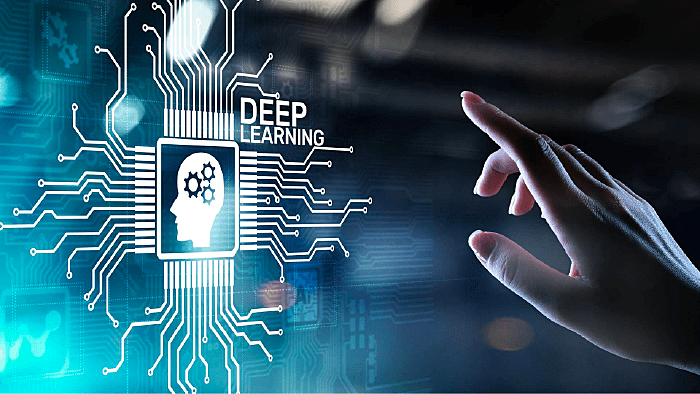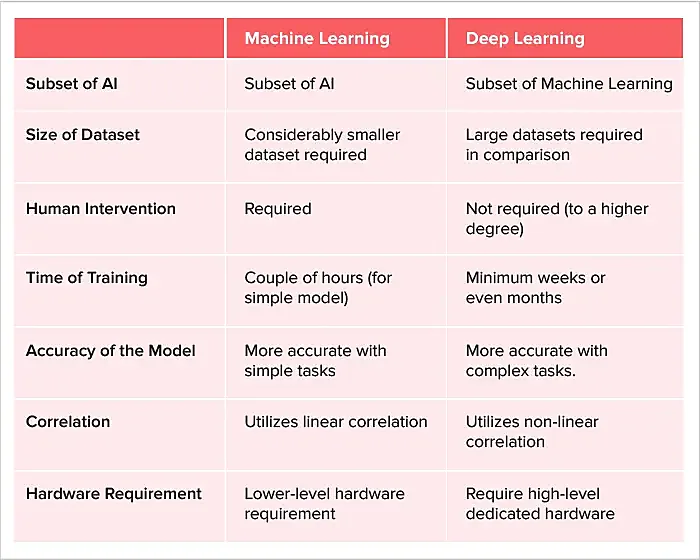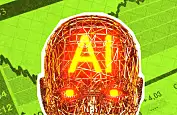
The idea behind artificial intelligence became a topic of curiosity after the 1927 movie “Metropolis”. Since then humans have been fascinated with creating artificial sentient beings that are capable of performing human operations.
Is it possible to fulfill this fascination? Well, topics like artificial general intelligence are hypothetical as of now. However, we have been able to create computer systems that are capable of automating a multitude of tasks and use cases across industries. These computer systems are backed by AI technologies such as machine learning and deep learning.
Both machine learning and deep learning are so popular that every decent app utilizes them to provide better customer service and customizable products. However, these two technologies are so intertwined that either people confuse them with each other or end up comparing them. Therefore, machine learning vs deep learning has always been an ongoing topic. However, today with this article, we will not only dehaze this confusion but also compare them to give you a better idea.
Therefore without wasting any time, let’s start with our machine learning vs deep learning topic.
Note: Learn more on the topic “What is Artificial Intelligence?”
What is Machine Learning?

Machine learning is a subfield of artificial intelligence. It allows a computer system to learn from identifying patterns and historical data to make predictions and provide outcomes with little human manual intervention.Machine learning, with the support of powerful bare metal server infrastructure, allows a computer system to learn from identifying patterns and historical data to make predictions and provide outcomes with little human manual intervention, enabling businesses to unlock the full potential of data-driven decision-making.
Examples of Machine Learning:
Some of the real-world examples of machine learning are:
- Facial Recognition
- Product Recommendations
- Social Media Optimization
- Predictive Analytics
- Email Automation
Different Ways Machine Learning Learns and Evolves

Unlike the majority of technologies that rely on electronic logic gates to perform functions, AI technologies perform operations using AI algorithms. This is especially the case with self-learning technologies such as machine learning and deep learning. So to understand the difference between deep learning vs machine learning, it is important to understand the self-learning mechanism of these AI technologies.
Also Read: Artificial intelligence development companies in India
1. Supervised Learning
In this model, the AI model is explicitly trained by providing labeled data as inputs and labeled data as desired outputs. Upon multiple iterations, the AI model learns to perform that function automatically with different datasets with limited human intervention.
For instance, a mother teaching her kid to eat rice with a spoon. Upon helping the kid explicitly to eat using a spoon, the kid starts to do the task by himself/herself. Therefore every time a kid is served rice, he will start eating it using a spoon.
Below are some of the algorithms that help in supervised learning:
- Neural Networks
- Naive Bayes
- Logistic Regression
- Support Vector Machine
- K-nearest neighbor
2. Semi-supervised Learning
In this type of learning, a small chunk of data that is provided is labeled while the remaining data is unlabeled. This helps the model to identify patterns in the data provided and base out predictions. For this initially, the model is fed with labeled data to learn the operation with the correct output. However, later on fed with huge amounts of unlabeled data to help it learn automatically and perform operations.
For instance, a teacher teaches a kid basic addition functions for the first few times and later on asks him/her to do it by himself/herself. This provides the capacity for the kid to explore the mathematical function and learn to apply the concept.
Some of the algorithms used in semi-supervised learning are:
- Self-training
- Transductive SVM
- Consistency Regularization
- Label Propagation
3. Unsupervised Learning
In this machine learning-based AI model, the model is provided with unlabeled data and asked to perform function upon the dataset by itself. It helps the AI model determine patterns and differences & similarities between unlabeled data by itself. It is a self-learning training model if we say it in simple language.
Common algorithms used for unsupervised learning are:
- DBSCAN (Density based spatial clustering of applications with noise)
- K-means Clustering
- Hierarchical Clustering
- Gaussian Mixture Model (GMM)
- Self-organizing Maps (SOM)
- Principal Component Analysis
How Machine Learning Models are Created?
Another important aspect of understanding the difference between deep learning and machine learning is to understand how they are created.
There are several steps for creating a machine-learning model. These are:
- Find relevant data and algorithm: The type of data that is used for training the model depends on the use case. To achieve this, the data used should be predefined, be it labeled or unlabeled. This also includes the type of training, the model undergoes and the algorithm used for processing the data.
- Preparation of dataset: Cleaning the data is an important task. If the data provided to the ongoing AI model training is not clean & sorted then it will skew the results generated by the developed model.
- Prepare dataset for cross-validation: The effectiveness of an AI model depends on its capability to generalize data. A persistent problem with machine learning models is that they are always on the verge of getting overfitted. Overfitting means that the model works only on the training data during production while it doesn't work in real-life scenarios. To remove these redundancies, the datasets are divided between training data and testing data. The process of cross-verifying a trained model with the testing data is called cross-validation.
- Perform Optimization: This is the final step of creating a machine learning model. In this step, the model is optimized to fit the task and goals for which the model is being developed. The step often involves the assessment of the overall model and the hyperparameters (parameters used for training the model) used.
What is Deep Learning?

Deep learning is a subset of machine learning. It is based on the concept of neural networks that mimics the human brain with multiple connected neurons that give us the capability to think. In deep learning, the number of layers used to create the model is more than three.
Different Algorithms for Training a Deep Learning Model
The difference between deep learning vs machine learning is imminent considering how differently both technologies are trained. Below are some of the algorithms that are used for training deep learning models.
1. Convolutional Model
This algorithm is primarily used for identifying images and seeking out patterns for computer vision. It takes input images and assigns importance to identify patterns in different images. This process is known as convolution. The convolutional model is primarily inspired by the human eye which detects patterns and sends signals to the brain for identifying objects.
Different applications of the convolutional model are:
- Recognition of videos and images
- Classifying images
- Creation of Media
- Natural language processing
Some of the most common CNN architectures available are:
- LeNet
- VGNNet
- GoogleLeNet
- ResNet
- AlexNet
2. Recurrent Neural Network
A recurrent neural network is a loop of interconnected nodes that can affect its subsequent nodes to a certain degree. This allows it to have a temporary dynamic behavior. Compare it to certain situations that form our behavior in different situations. This capability of the recurrent neural network makes it capable of processing unsegmented data, handwritten documents, and speech recognition.
How Deep Learning Works?
As mentioned earlier, a deep learning model works on the principle of the human brain. This means that it continuously assesses data to gather insights and add them to the model. To perform this assessment, deep learning algorithms use a layered structure that is known as artificial neural networks. This acts like an interconnected network of neurons that gathers and stores information, and makes insights from it.
Real-life example of Deep Learning…
There are several examples out there that display the efficacy of deep learning as a technology. For instance, virtual assistants like SIRI, Cortana, Google Assistant, etc. These virtual assistants have been in development for years and have been gathering data from their users since their inception. They have not only helped them evolve but reach substantial autonomy in terms of development for its users.
In the beginning, the majority of these virtual assistants were not very well-versed in understanding even English correctly. However, with time, these virtual assistants are capable of understanding different dialects as well as languages. These virtual assistants offer a variety of functions that one can perform such as:
- Making voice-assisted phone calls
- Scheduling an appointment
- Managing an email account
- Making travel arrangements
- Creating a shopping list
Another example of Deep Learning would be AlphaGO. It is a program that uses deep learning in order to play the board game GO. AlphaGo is backed by DeepMind Technologies. AlphaGo was able to defeat Lee Sedol, a professional Go player in a game of 5 matches. In this, the system won 4 matches consecutively by resignation. This was a historical battle after the challenge between IBM’s Deep Blue and Gary Kasparov.
What is the Difference between Machine Learning and Deep Learning?
Despite the fact that both of these AI technologies seem similar, there are stark differences leading to the argument of ML vs DL. Therefore, let’s start to learn the differences between the two technologies.

Note: Curious about the different types of AI? Here’s an article for you!
1. Subset of AI
Machine learning is the subset of Artificial Intelligence. However, deep learning is a subset of machine learning. An AI model which has more than 3 layers is considered a deep learning model. It would be safe to say that deep learning is a complex version of machine learning.
Adding to it both machine learning and deep learning are similar technologies. However, deep learning provides many superior functionalities. For instance, machine learning can be trained to respond to commands such as “Turn on the Light”, “Turn the fan On”, etc. However, a deep learning model is much smarter because it has the capability to understand intent (to a certain degree). For instance, a deep learning model will overtime be able to respond to phrases like “Light up the room”, “It‘s too hot”, etc. It is because it is continuously growing.
2. Size of Dataset
Another huge difference between machine learning and deep learning is the size of the dataset upon which they both are trained. Machine learning models are trained over considerably small sizes of datasets. The reason behind this is the number of layers in a machine-learning model is limited.
Adding to it, deep learning is equivalent to a human mind which is capable of understanding commands and instances from a much wider range of phrases. This makes the amount of data required to train a deep-learning model considerably larger.
3. Human Intervention
Machine learning models are primarily trained using labeled data. This means that there are chances of errors and mistakes that can skew the output of the final model. This, thereby, requires manual intervention at every step of the way.
On the other hand, deep learning models are much denser and have the capability to learn from unlabeled data. It continuously evolves using trial-n-error. Therefore, it seldom requires manual intervention to mend its issues.
4. Time of Training
Another difference between deep learning and machine learning model is the time of training. Machine learning models require substantially less amount of time to train in comparison to deep learning. It is because of the following reasons:
- Size of the dataset is much smaller in comparison
- Machine learning models are not that complex in comparison
- Algorithms used by deep learning models are generally resource driven
If we start comparing deep learning vs machine learning in terms of time then a simple machine learning model can be trained within a few hours. On the other hand, it could take from weeks to months in order to train a deep-learning model.
5. Accuracy of the Models
If we compare the difference between machine learning and deep learning over this facet then the winner here is deep learning. This is especially the case with complex tasks as deep learning models comprise many complex patterns in terms of training. On the other hand, machine learning models can be much more accurate with easier tasks.
Below are the factors based on which the accuracy of a model depends. These are:
- Complexity of the task
- Size of the dataset
- Complexity of the model used
- Algorithms used (some algorithms are more accurate than others)
Below are some examples of operations where deep learning algorithms are more accurate than machine learning models. These are:
- Image recognition
- Natural language processing
- Speech recognition
6. Correlation
Correlation is the association between two or more variables (input data) in an AI model. It is a statistical technique that is used to determine how changes in one variable leads to changes in others. For machine learning, usually, linear correlation is required. On the other hand, deep learning requires non-linear correlation which is much more complex.
Types of correlation required for machine learning are:
- Feature selection
- Regularization
- Interpreting models
Types of correlation required for deep learning are:
- Pearson correlation coefficient
- Spearman correlation coefficient
- Kendall Tau correlation coefficient
7. Hardware Requirement
The hardware requirements for machine learning and deep learning are very different. For instance, a machine learning model can be trained using a laptop or desktop. On the other hand, in order to create a deep learning model, we require powerful hardware such as GPU or TPU (tensor processing units).
Adding to it, the hardware requirement for machine learning and deep learning depends on the goal and the quality of the dataset being used.
Below is a table that can help you understand the hardware requirements of machine learning vs deep learning:
| Machine Learning | Deep Learning | |
| CPU | Multiple cores recommended | High clock speed |
| GPU | Normal GPU can work | High number of cores |
| RAM | 16 GB recommended | 32 GB recommended |
| Storage | Works well with both hard drive and SSD | SSD Recommended |
Wrapping Up!
To conclude this article “Machine Learning vs Deep Learning”, we would say that deep learning is an advanced version of machine learning. The utilization of these technologies depends on the density or inclusion of AI required for a particular use case. Artificial intelligence development companies are well aware of the difference between ML vs DL. However, as an aspiring practitioner of the tech or an entrepreneur, it is important to understand the difference.
With this article, we hope we may have catered to your curiosity and provided you with an understanding to leverage these technologies effectively.
Frequently Asked Questions
-
What is the difference between artificial intelligence vs machine learning?
-
Draw a comparison between machine learning vs deep learning vs AI?
-
What are the tasks for which deep learning can be used in real life?




















